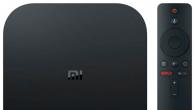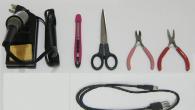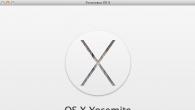Synchronizing your xmarks tabs is a reliable way to keep the tabs you want and not lose them for years. When working on the Internet, you want to have your favorite services and important resources close at hand. Nothing is easier - added a page to the tab bar, and it will always be in sight. But how not to lose your saved pages when you reinstall your browser?
There are several options for syncing tabs.
Save user profile- inconvenient for most users. You need to enable the display of hidden files and copy folders.
Synchronization with google account- not for everyone.
First, not everyone has a google account.
Second, quite often, the synchronization fails. On top of that, it sometimes crashes Google Chrome browser settings
Synchronizing tabs via xmarks Is perhaps the easiest and safest way to store tabs. For 8 years, he has never let me down.
Xmarks is completely free and supports all popular browsers (except Opera). And the best part is that it is configured in a few clicks of the mouse.
Synchronization of tabs xmarks. Install and configure the plugin.
The first thing to do is install the plugin. We go to the application market and find what we need. To save time searching, type xmarks.
After, click the install (add to) button and wait a little. The plugin installs in a couple of minutes and is ready to go. But for the synchronization to take place normally, you need to create an account. To do this, click on the blue butterfly icon.

I will briefly describe the process.
1 window - click next
2 window - no create an account for me. Further.
When you reinstall your browser, at this step you will need to select "Sign in to my account".
3 window - simple registration. You need to enter a password, login and mail. You will need this data to log into your account and store tabs on the server.
After logging into your account, a window like this will appear

Click the "Change Sync Settings" button. We put a mark as in the screenshot. This setting starts syncing tabs from those that you have stored on the server.

And the final step is to press the "Sync" button. Everything, synchronization was successful. This may take a few minutes the first time. Especially if you have a lot of tabs.
Xmarks shows the sync status of tabs.
1. Blue butterfly icon + green exclamation mark. Everything went well, the tab was saved
2. Blue butterfly icon + yellow exclamation mark. A tab has been added or removed. Synchronization required.
In this case, click on the butterfly sign with the left mouse button and select "Synchronize Now"
3. Blue butterfly icon + red question mark. It appears extremely rarely, it means that the synchronization has passed with an error. Check if you are signed in to your account and sync again.
The instruction turned out to be long, as I tried to write as detailed as possible. In real life, setting up a plugin will take 2-3 minutes, and your tabs will be securely saved and stored on the server.
If suddenly, something goes wrong, and you overwrite the data on the server, xmarks makes backups, and you can easily restore the tabs.
In this article, I would like to touch on the topic of bookmark synchronization.
First, I will briefly tell you my story of working and tormenting with bookmarks.
About two years ago, when I was still using the Opera browser, I had a constant problem with bookmarks and various settings in the browser. Then I had the good old Windows XP installed, and I often had to reinstall it, especially with my constant experiments on the computer. So there was an acute problem of restoring everything that had accumulated in the browser: bookmarks, browsing history of various sites, saved passwords, etc. All this after reinstalling the system, and of course after reinstalling the browser, was lost. It was necessary to re-drive everything. A little later, I realized that you can export all bookmarks (save a backup copy), and after reinstalling the browser, import them (restore from a saved file).
But there was and is a much better option, to which I came a little later and now I will tell you about it.
Synchronization in the browser.
Synchronization in the Google Chrome browser can be called the storage of everything that we have in the browser, not only on our PC but also on Google servers. This means that we can, besides that, it is easy to reinstall the system or delete the browser without fear that the data will be lost, so we can also access our bookmarks from our other computers or even smartphones.
That is, we must create an account, or log into the one that we already have, in the event that we have already registered in at least one of the Google services, be it gmail.com mail or something else. And after that everything will be preserved for us. In the browser settings, you can choose which data can be used for synchronization. I have checkboxes in front of everyone, and these are: applications, auto-fill, bookmarks, extensions, omnibox history, settings, themes, tabs. For example, you do not want Google to store your passwords on its servers, in which case we uncheck the box next to this item and save.
Well, I use all these synchronization capabilities. Now, when I reinstall the system, I do not restore anything in the browser. I just have to install Google Chrome, enter my username and password and wait five minutes until everything is restored.
Let me now show you a little in pictures to make it easier for you to navigate.
Launch the Google Chrome browser and click on the Tools icon in the upper right corner. In the context menu that appears, find the "Sign in to Chrome" item.

In the window that opens, you need to enter the username and password from your Google account. Anything you have from Google will do. It can be mail or other services where you use this search engine. We need to enter a username (email address) and password, then click "Login".
If you have never registered with Google, you can do this by clicking on the link “ Create a google account».

Then we need to enter various details that are usually used during registration.

When the account is created Log in to Chrome as I showed above.
We are told that we have successfully signed in and all data will be synced to the browser.

In your case, you don't have any bookmarks or history yet. They will start to be created from now on, and the next time you enter Chrome like this, they will appear in the browser, as it happened with me a few minutes later.

All bookmarks are in place. The rest was also synced, even themes and extensions installed that I had before.
If we click on the settings icon again, we will see that now instead of the "Enter Chrome" item, it has become - " Logged in as gkarser". This is my Google account.

If we click on this item, and then in the window that opens, click " Additional sync settings».

Then we can remove here, what does not need to be synchronized. Customize for yourself and click "OK".

And finally. For those who have a smartphone such as an iPhone or Android device, know that you can sync your bookmarks there as well. Install Google Chrome, log into your account. Then find the item " Bookmarks on the computer»And you will see all your bookmarks that are saved on your computer.
See how on my iPhone.

Very comfortably!
That's all for me, an article about sync in Google Chrome completed!
How to comfortably surf the web on different devices? So that found on one of the devices (for example, on a PC)
the information was not lost, and it was possible to return to it at a convenient time, but using a different device (another PC, laptop, smartphone, etc.)
... To help us ensure that we don't lose valuable information found on the Internet, Microsoft with a previous update Fall Creators Update added to Windows 10 feature Continue on PC.
This is the ability to transfer active browser tabs to iOS- and Android- devices on Wednesday PC and laptops with installed "Ten"... True, Microsoft did not provide a reverse mechanism within this function. But the creators of popular cross-platform browsers have long ago implemented functionality in their products to solve this problem. When included in such web- browsers to synchronize data between different devices, we do not need to intentionally save something, transfer something somewhere, and indeed take care of something. Active tabs from all authorized devices will be displayed on any of them. Let's see how it all works in the top three popular web- observers -, and Opera .
1. Google Chrome
The data synchronization function is present on board the most popular web-browser and allows you to automatically transfer bookmarks, logins, passwords, history and other data to different desktop and mobile devices, including active tabs of the current session. And between different desktops, you can also sync themes and built-in extensions. To use this opportunity, you need google account - a universal profile used for authorization on Youtube, v Google play and other services Google... When installing himself offers to log in with Google-account. If not done immediately after installation web-observer, you can later authorize, for example, in the settings section.
Active tabs from different devices are displayed in the history section.

Here we will see all synchronized with the account PC, laptops and mobile devices with their sessions of active tabs.

If Google-account was not connected during installation on tablets and smartphones, this can be done in the settings of the mobile version of the browser.

To view sessions of active tabs on other devices, you must select from the menu.

Then expand the list of the desired device.

2. Mozilla Firefox
On board another popular web-the browser also has a developed synchronization system, which is in no way inferior to that implemented in ... To use it you need Firefox account ... It is also suggested to create or connect one immediately after installing the browser, and this can also be done at any time later in the settings or on the sidebar of the cloud tabs.

Here, on the sidebar when choosing cloud tabs, and we will keep track of all session tabs in the future. installed on other computers, tablets and smartphones.

On tablets and smartphones, you can connect the synchronization function in the mobile version web-observer. Click here.


Later in the same section we will observe all computers and gadgets synchronized with the account, as well as their active tabs.

3. Opera
Third cross-platform web-browser with the ability to automatically transfer data - Opera... It also has a synchronization function that is inferior to that on board. and except that the lack of support for transferring themes and extensions between desktop versions of the browser. True, if we talk specifically about the synchronization of sessions of tabs open on other devices, then this function fully works only in the desktop version of the browser. Not everything is so simple with the mobile version, nevertheless there is a way out. But first oh PC and laptops. We turn on the synchronization service in the browser menu.

Create an account Opera or log in if you already have one.

Sessions of the Opera's active tabs on other computers and mobile devices will be observed in a special section.

The same feature is present in a different implementation when you press a special button on the toolbar web-observer.

What about mobile devices? To continue browsing web-pages on a tablet or smartphone, on a computer we add these pages to the express panel.

Then, in the Mobile Opera, go to the section for synchronized data.


And we will see express panels- the very same visual browser bookmarks that are displayed on its home page - all equipment tied to the account.

True, we will only see express panels, but not sessions of active tabs. In this moment mobile Opera loses a little to the same mobile and .






